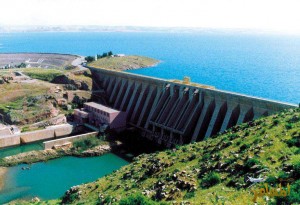
A study by the Global Water Atlas highlights Morocco’s severe water scarcity, placing it among the most impoverished African nations in terms of water resources. The study emphasizes the country’s water stress, uneven distribution of water resources, and significantly low water reserves compared to neighboring countries. Morocco’s dams also face major shortages, with limited water volume available for its population.
A study conducted by the “Global Water Atlas,” prepared by a geography professor at the University of Paris Nanterre, stated that “Morocco is one of the poorest African countries in terms of water resources, along with Algeria, Tunisia, Libya, Egypt, as well as South Africa, Sudan, and other countries whose freshwater reserves do not exceed 1000 cubic meters per person per year.”
The same source added that “Morocco’s water situation is in a state of absolute scarcity, as the country, along with the countries of the southern Mediterranean, is facing significant water stress. Moreover, water resources in these countries are unevenly distributed among regions.”
According to the study, as reported by the Arabic version of the news outlet “Hespress,” “the water reserves in North African countries, particularly Morocco, have been continuously decreasing. In 2018, Morocco’s water reserves amounted to 100 cubic meters, while its neighboring country, Spain, had reserves exceeding 200 cubic meters during the same year. These figures are similar to most European countries bordering the Mediterranean, except for Albania, Slovenia, and Bosnia and Herzegovina.”
The same source also noted that “regarding the situation of dams in Morocco, the country’s water reservoirs suffer from a significant shortage in terms of water volume. The total combined quantity of its reservoirs does not exceed 500 cubic meters per person, which is a small number compared to most African countries, except for East African countries, particularly Kenya, where its dams seem to be filled with an average of five thousand cubic meters per person.”


